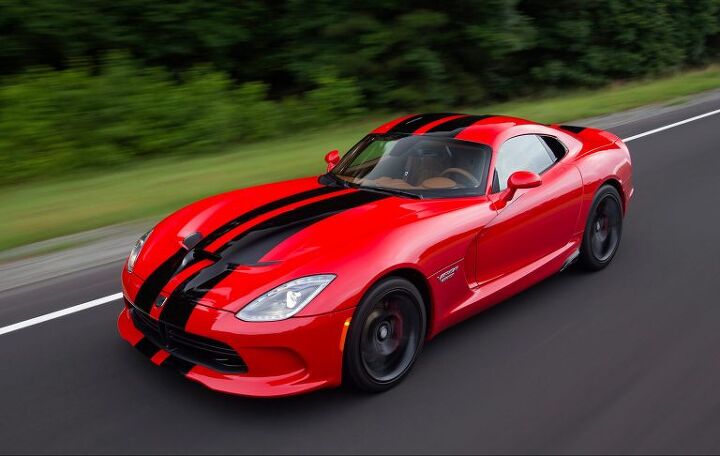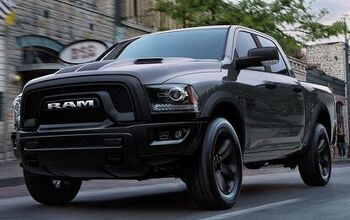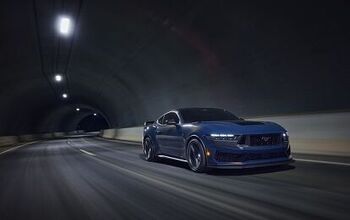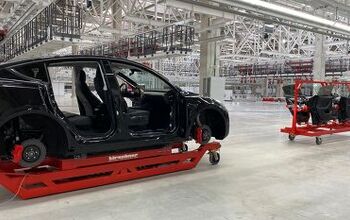FCA's Detroit Dodge Viper Assembly Plant to Close Indefinitely

Fiat Chrysler Automobiles is abandoning Conner Avenue Assembly in Detroit, Michigan. The plant produced Dodge Vipers sporadically for over two decades, but low sales volume eventually led to FCA’s decision to remove the high-performing model from its lineup. In 2016, Dodge only sold 630 Vipers. A final, limited-edition 2017 run sold out in less than a week.
The two-seater doesn’t meet upcoming safety regulations due to its absence of side-curtain airbags. Rather than undergo a costly redesign, FCA chose to let nature take its course and placed the model in hospice care back in 2015. However, the future of the assembly plant and its employees were uncertain at the time.
Conner Assembly houses 87 employees responsible for the Viper and the model’s V10 engine. According to WDIV 4 Detroit, the entirety of the staff will be offered positions at other FCA locations, but the plant will be closed indefinitely. Formerly home to Champion spark plugs, Dodge gained ownership of the factory in 1995 and designated it specifically for Viper production. That lasted until 2010, with the vehicle reentering assembly in 2012.
The plant also built the retro-styled Plymouth Prowler for the duration of its brief, 11,700-unit lifespan.
Viper production is scheduled to end in August (before the safety regulations take hold in September), at which point the plant will be closed. While the snake could return someday, keeping it as a bespoke low-volume model was never in the cards for FCA’s long-term product strategy. Struggling to reach 700 North American deliveries in the very best of years, Viper volume was perpetually eclipsed by its mainstay domestic rival, the Chevrolet Corvette.
General Motors has annually sold 30,000 or more Vettes in the U.S. since 2014.
[Image: FCA]

A staunch consumer advocate tracking industry trends and regulation. Before joining TTAC, Matt spent a decade working for marketing and research firms based in NYC. Clients included several of the world’s largest automakers, global tire brands, and aftermarket part suppliers. Dissatisfied with the corporate world and resentful of having to wear suits everyday, he pivoted to writing about cars. Since then, that man has become an ardent supporter of the right-to-repair movement, been interviewed on the auto industry by national radio broadcasts, driven more rental cars than anyone ever should, participated in amateur rallying events, and received the requisite minimum training as sanctioned by the SCCA. Handy with a wrench, Matt grew up surrounded by Detroit auto workers and managed to get a pizza delivery job before he was legally eligible. He later found himself driving box trucks through Manhattan, guaranteeing future sympathy for actual truckers. He continues to conduct research pertaining to the automotive sector as an independent contractor and has since moved back to his native Michigan, closer to where the cars are born. A contrarian, Matt claims to prefer understeer — stating that front and all-wheel drive vehicles cater best to his driving style.
More by Matt Posky
Latest Car Reviews
Read moreLatest Product Reviews
Read moreRecent Comments
- Redapple2 Dear lord ! That face. HARD NO.
- Urlik Let’s ban for all. Having that data anywhere leaves it open to the Chinese government potentially hacking systems to get the data.
- Redapple2 Gen 1 - 8/10 on cool scale.Gen 2 - 3/10.
- SCE to AUX "...to help bolster job growth and the local economy"An easy win for the politicians - the details won't matter.
- Kjhkjlhkjhkljh kljhjkhjklhkjh so now we will PAY them your tax money to build crappy cars in the states ..


































Comments
Join the conversation
The story of the Dodge Viper is a sad one. The original RT/10 roadster was obscene in a refreshing way. The US car market had turned away from fullsize American V8 boats and sports cars to smart European sedans and fuel-efficient Japanese appliances. But out of nowhere, Dodge dropped the Viper RT/10 on the car market. The Viper was an exercise in pretending the era of American big blocks never disappeared; instead, it continued throughout the 80s, until it spawned the 1st generation Viper. The RT/10 had a huge visual impact. It was as wide as a country lane, with side-pipes, massive tires and giant 3-spoke wheels. The engine was 8.0L of V-10 power, and it made the run to 60 in less than 5 seconds (an amazing feat in the early 90s). It was completely bonkers in the right ways. Unfortunately, Chrysler was seemingly embarrassed by the Viper's boorishness. Worse, the attempts to civilize subsequent generations of the car were executing in all the wrong ways. The visual impact of the vehicle was impaired. The side pipes were eliminated and later hidden. The roadster variant was eliminated. NVH (character) was tuned out of the vehicle, and the cartoonish gauges and instrumentation were eventually dropped. Meanwhile, the unsustainable part of the Viper concept, the engine and awful road manners, were retained, despite changes to Chrysler's engine portfolio and new federal regulations requiring ABS and anti-spin control. Rather than make a few difficult changes to the powertrain, chassis, and suspension, which would have spared the vehicle in the long run, Chrysler decided to keep watering down the visual aesthetic while puffing up a powertrain that was being regulated out of existence. Very sad.
Nice to see senseless government meddling cost us another awesome automobile.